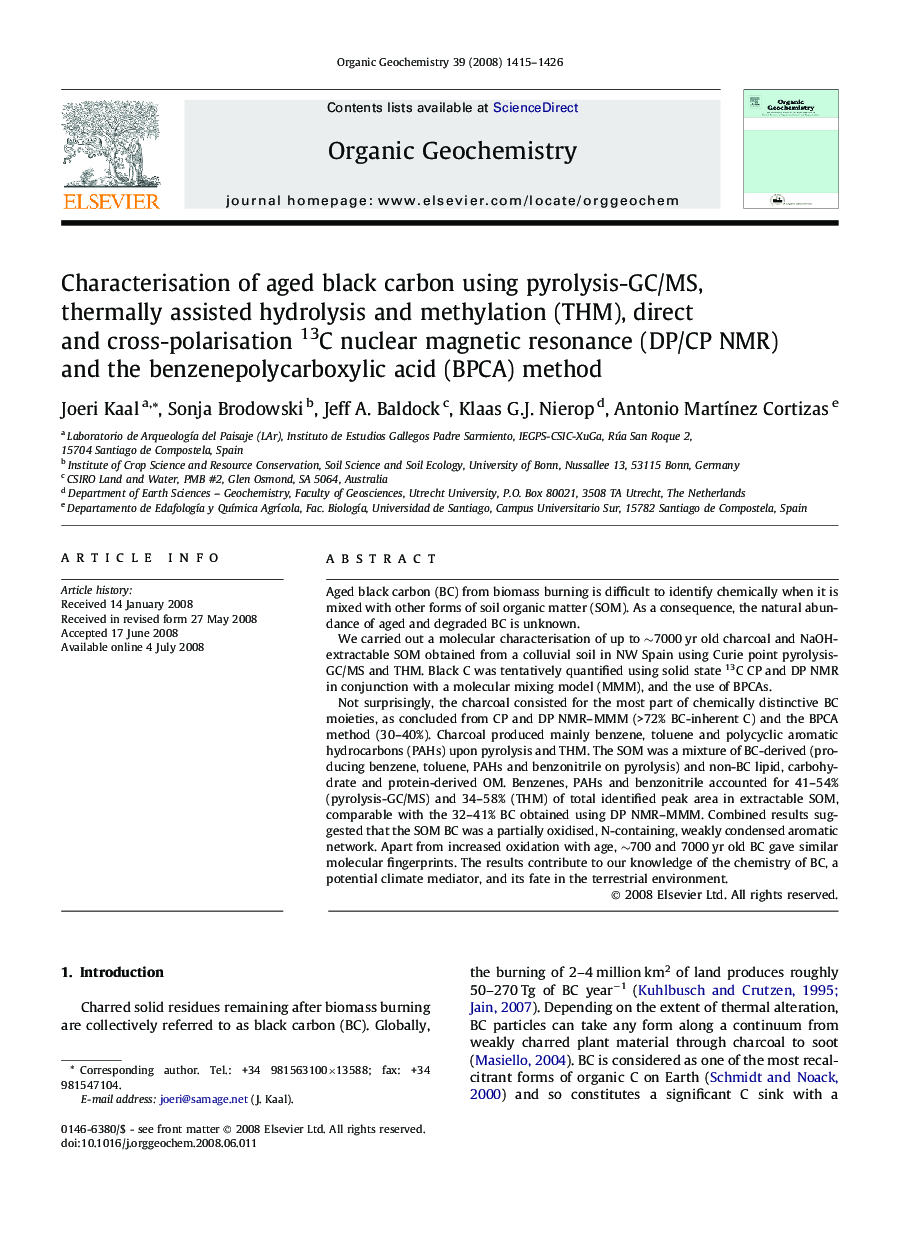| کد مقاله | کد نشریه | سال انتشار | مقاله انگلیسی | نسخه تمام متن |
|---|---|---|---|---|
| 5163496 | 1379848 | 2008 | 12 صفحه PDF | دانلود رایگان |
عنوان انگلیسی مقاله ISI
Characterisation of aged black carbon using pyrolysis-GC/MS, thermally assisted hydrolysis and methylation (THM), direct and cross-polarisation 13C nuclear magnetic resonance (DP/CP NMR) and the benzenepolycarboxylic acid (BPCA) method
دانلود مقاله + سفارش ترجمه
دانلود مقاله ISI انگلیسی
رایگان برای ایرانیان
موضوعات مرتبط
مهندسی و علوم پایه
شیمی
شیمی آلی
پیش نمایش صفحه اول مقاله

چکیده انگلیسی
Not surprisingly, the charcoal consisted for the most part of chemically distinctive BC moieties, as concluded from CP and DP NMR-MMM (>72% BC-inherent C) and the BPCA method (30-40%). Charcoal produced mainly benzene, toluene and polycyclic aromatic hydrocarbons (PAHs) upon pyrolysis and THM. The SOM was a mixture of BC-derived (producing benzene, toluene, PAHs and benzonitrile on pyrolysis) and non-BC lipid, carbohydrate and protein-derived OM. Benzenes, PAHs and benzonitrile accounted for 41-54% (pyrolysis-GC/MS) and 34-58% (THM) of total identified peak area in extractable SOM, comparable with the 32-41% BC obtained using DP NMR-MMM. Combined results suggested that the SOM BC was a partially oxidised, N-containing, weakly condensed aromatic network. Apart from increased oxidation with age, â¼700 and 7000Â yr old BC gave similar molecular fingerprints. The results contribute to our knowledge of the chemistry of BC, a potential climate mediator, and its fate in the terrestrial environment.
ناشر
Database: Elsevier - ScienceDirect (ساینس دایرکت)
Journal: Organic Geochemistry - Volume 39, Issue 10, October 2008, Pages 1415-1426
Journal: Organic Geochemistry - Volume 39, Issue 10, October 2008, Pages 1415-1426
نویسندگان
Joeri Kaal, Sonja Brodowski, Jeff A. Baldock, Klaas G.J. Nierop, Antonio MartÃnez Cortizas,